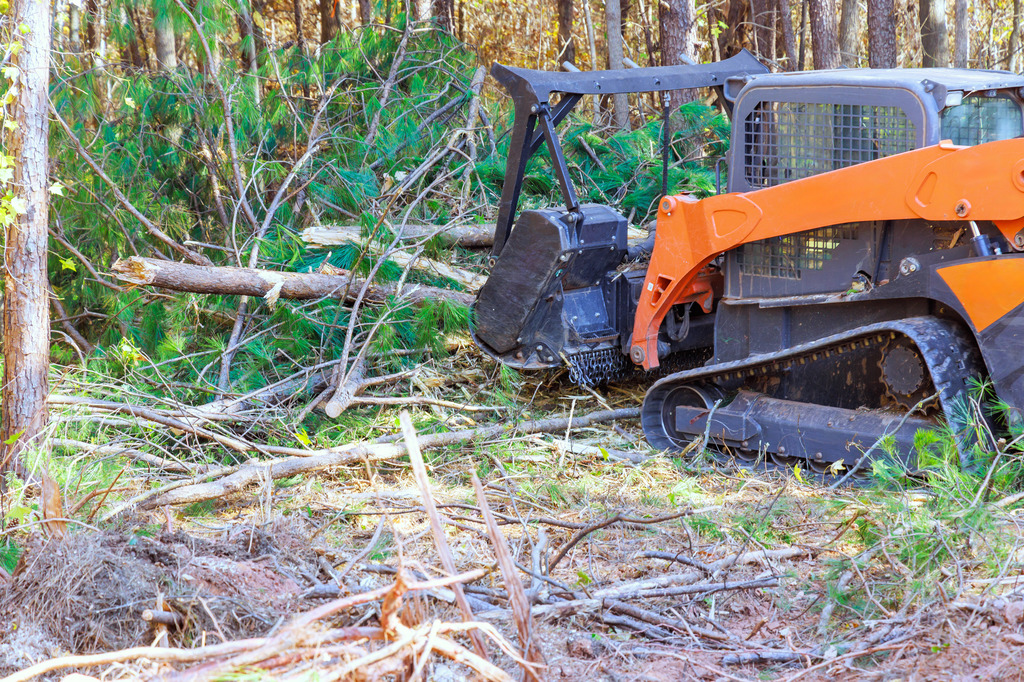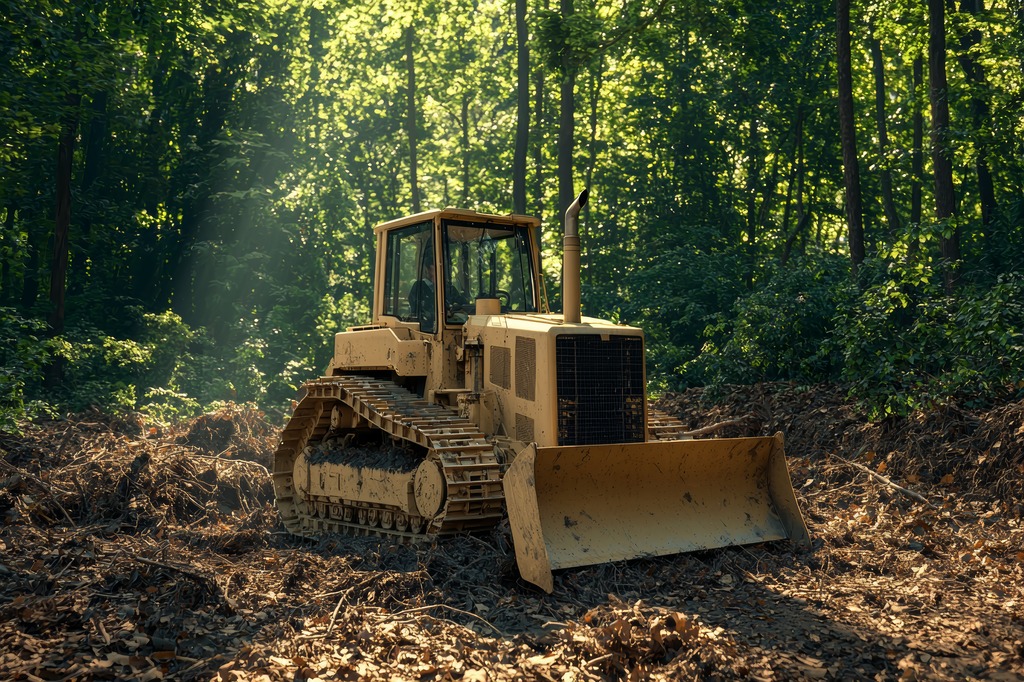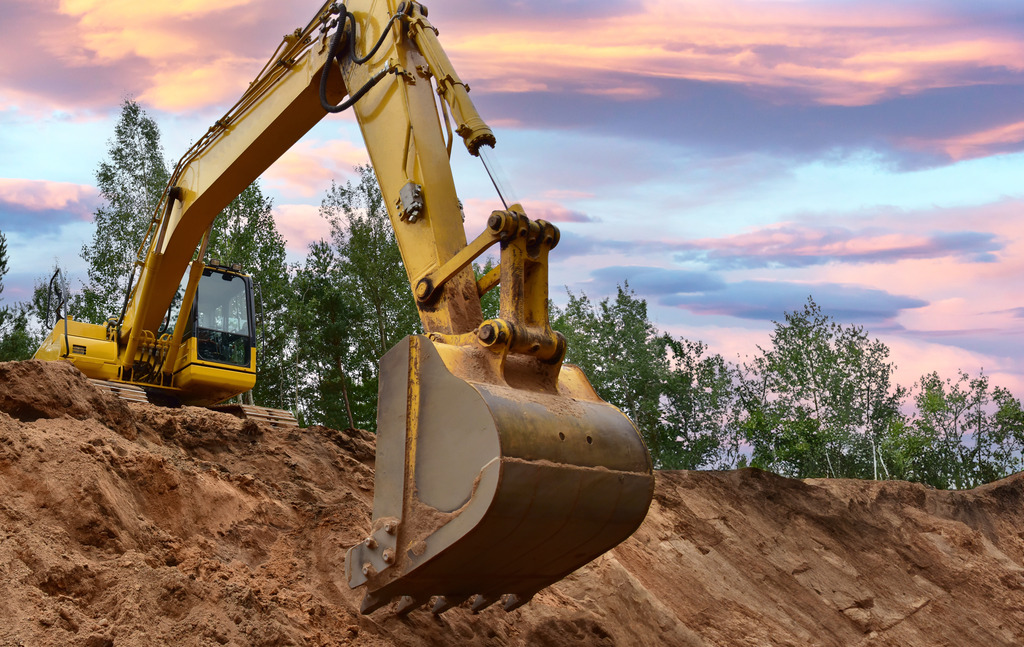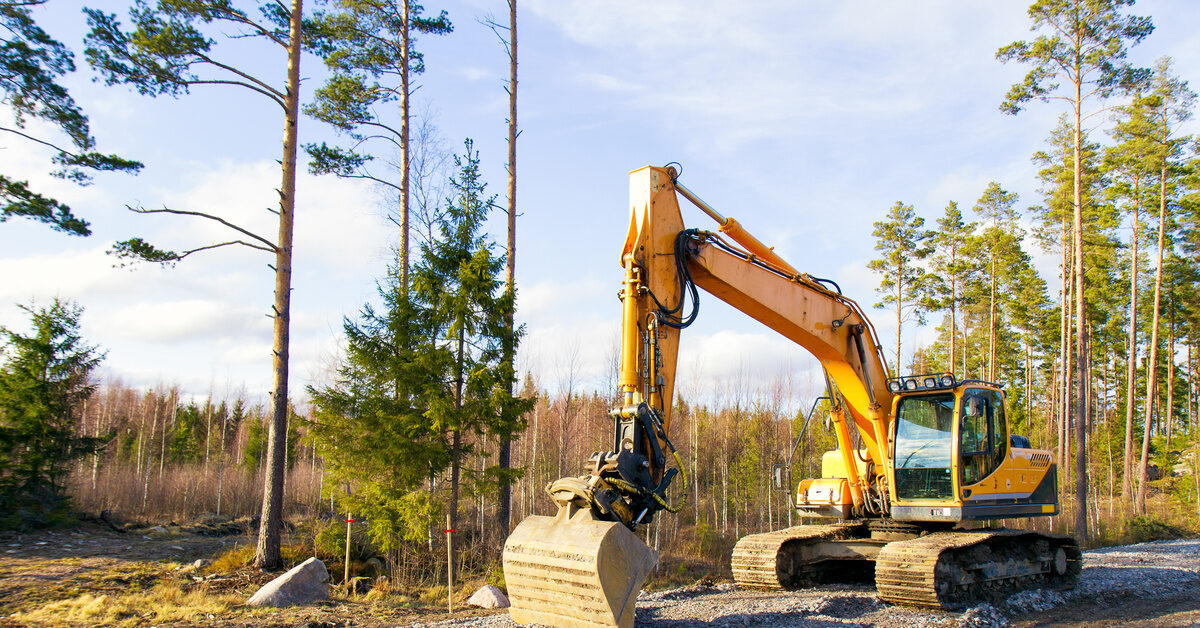Land clearing is a critical step in many projects, from agricultural development to construction and environmental management. The method you choose can have significant implications for cost, efficiency, and environmental impact. Forestry mulching, dozing, and excavating are three of the most common techniques for clearing land, and each comes with its own set of advantages and disadvantages. This guide compares these methods to help you make an informed decision based on your specific needs.
Forestry Mulching

Forestry mulching is a land-clearing technique that involves using a specialized machine with a mulching head to shred vegetation and trees into mulch.
Pros:
- Environmental Benefits:
- Forestry mulching leaves the shredded vegetation as a layer of organic mulch on the ground, which prevents erosion and enriches the soil.
- It minimizes soil disturbance compared to other methods.
- Efficiency:
- A single machine can cut, grind, and clear vegetation in one step, reducing the need for multiple pieces of equipment.
- It works well for selective clearing, preserving desirable trees and vegetation.
- Cost-Effective for Small to Medium Projects:
- For projects involving brush and small trees, mulching is often faster and less labor-intensive than dozing or excavating.
- Versatility:
- It can handle a variety of terrains, including slopes and uneven ground.
Cons:
- Limited Capability with Large Trees:
- Forestry mulching is less effective for removing very large trees or stumps compared to dozers and excavators.
- High Initial Costs:
- Equipment and operator costs can be high, especially for projects that require extensive mulching over a large area.
- Not Suitable for Grading:
- Forestry mulching does not provide the ground-leveling capabilities needed for some construction projects.
Dozing

Dozing involves using a bulldozer to push and remove vegetation, trees, and topsoil. It’s a traditional method for large-scale land clearing.
Pros:
- Effective for Large-Scale Projects:
- Bulldozers can clear large areas quickly, making them ideal for large-scale agricultural or construction projects.
- Powerful Equipment:
- Dozers can handle large trees, stumps, and heavy vegetation more effectively than mulchers.
- Prepares Ground for Construction:
- Bulldozing leaves a level surface, which is often required for construction or development projects.
Cons:
- Environmental Impact:
- Dozing removes topsoil and vegetation entirely, increasing the risk of erosion and negatively impacting soil health.
- It disrupts ecosystems more significantly than forestry mulching.
- Cleanup Required:
- Vegetation and debris need to be hauled away or burned, which adds to labor and disposal costs.
- Less Precision:
- Dozers are not suitable for selective clearing, as they tend to clear everything in their path.
Excavating

Excavators are heavy-duty machines equipped with a bucket or other specialized attachments for digging and clearing land.
Pros:
- Precise Clearing:
- Excavators are ideal for tasks requiring precision, such as removing individual trees or working near structures.
- Stump and Root Removal:
- Excavators excel at removing stumps and roots, making them ideal for projects requiring a cleared foundation.
- Versatility:
- With the right attachments, excavators can handle a variety of tasks beyond land clearing, such as trenching or grading.
Cons:
- Time-Consuming:
- Excavating is generally slower than dozing or mulching for large areas.
- High Operating Costs:
- Excavators require skilled operators and consume significant amounts of fuel, increasing operational costs.
- Environmental Impact:
- Like dozing, excavating can disrupt soil and ecosystems, though it is less invasive when used selectively.
Comparing the Methods
| Factor | Forestry Mulching | Dozing | Excavating |
|---|---|---|---|
| Environmental Impact | Low – minimal soil disturbance | High – disrupts soil and ecosystems | Moderate – depends on usage |
| Efficiency | High for small/medium areas | High for large areas | Low for large areas, high precision |
| Cost | Moderate | Moderate to High | High |
| Debris Handling | None – mulch stays on site | High – debris must be removed | Moderate – depends on scope |
| Tree Size | Best for small to medium trees | Handles large trees effectively | Best for precise or large tree removal |
| Terrain | Versatile | Best for flat/large areas | Versatile with proper attachments |
Choosing the Right Method
The best land-clearing method depends on your specific project needs:
- Forestry Mulching is ideal for environmentally sensitive projects, selective clearing, and small to medium-sized areas.
- Dozing is best suited for large-scale projects requiring extensive clearing and leveling.
- Excavating works well for precise clearing, stump removal, and projects requiring versatility.
Conclusion
Each land-clearing method—forestry mulching, dozing, and excavating—has its own strengths and weaknesses. Forestry mulching offers an eco-friendly and efficient solution for many projects, while dozing and excavating provide the power and precision needed for larger or more complex tasks. By understanding the pros and cons of each method, you can choose the most suitable option for your land-clearing needs, balancing efficiency, cost, and environmental impact.
